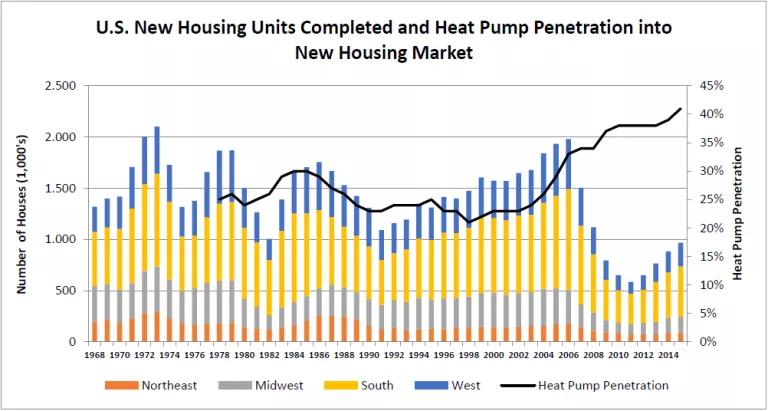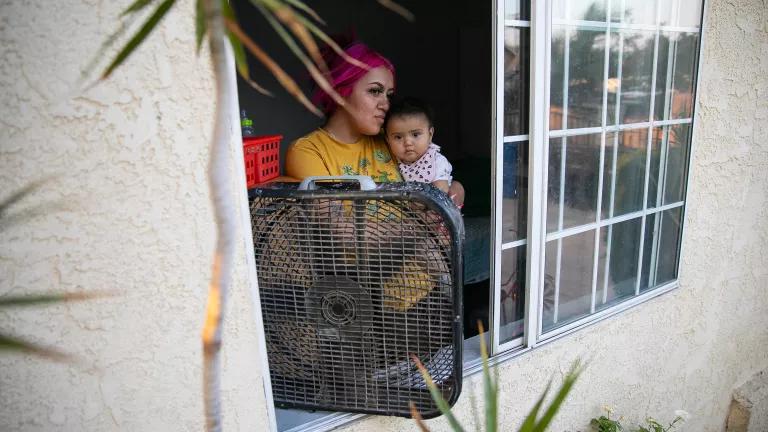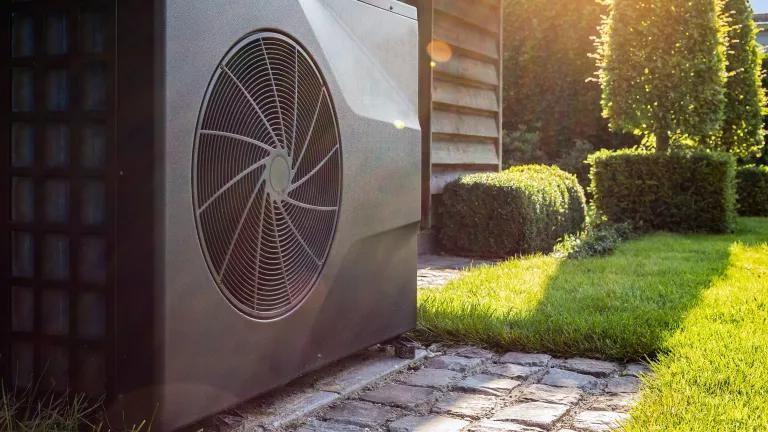Time for California to Catch Up on Clean Energy in New Buildings
Our state’s leadership comes with a huge climate blind spot: gas appliances.
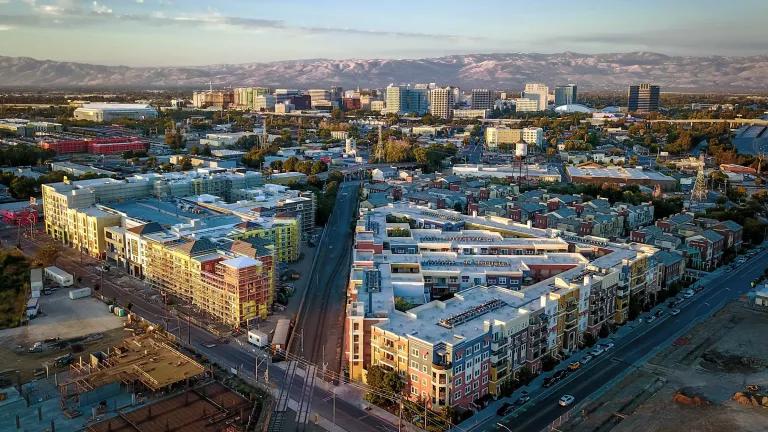
The California building energy code is known for leading the country on energy efficiency and was the first in the world to require solar panels on new single-family and low-rise residential homes. But our state’s leadership comes with a huge climate blind spot: gas appliances. California also leads the country in the number of new gas hook-ups to buildings, ahead of Texas and New York.
The state of California updates its building energy code, known as “Title 24,” every three years. Each time, the code makes incremental steps toward greater efficiency, helping to cut building occupants’ utility bills while slowly reducing air and climate pollution from the use of energy in homes and other buildings. But the last three fire seasons have proven that we are in extraordinarily unusual and unprecedented times —and need to move much faster on improving the energy code to phase out the use of fossil fuels in new buildings.
We're already seeing massive wildfires that climate experts were not expecting until mid-century. Driven by the hotter and drier conditions associated with climate change, the 2020 fires have claimed the lives of dozens of Californians, burned a record 4 million acres, destroyed thousands of buildings, and produced weeks of health-harming smoke pollution.
Climate Blind Spot
The “2022” building code developed by the California Energy Commission will set the rules for energy efficiency levels and whether heating and hot water are powered by fossil or clean energy in new construction beginning in 2023, for buildings that will operate well into the second half of this century.
Burning gas in furnaces and water heaters in California’s homes and buildings produces more climate pollution than all the state’s power plants, and seven times more nitrogen oxide pollution—respiratory irritants implicated in asthma and other illnesses. That makes buildings key contributors to poor air quality inside and out—and to public health impacts, particularly in the L.A. basin and Central Valley that have some of the nation’s worst air quality.
Fortunately, there are readily available clean energy alternatives such as super-efficient electric heat pumps and induction stoves, which will be increasingly powered by electricity generated from renewable sources like solar and wind, cutting pollution from buildings eventually to zero. Heat pumps can heat and cool a home by moving heat into and out of a building, and can heat water by moving heat into a tank. They provide three to five times more heat for the same amount of energy than gas furnaces and water heaters while emitting zero air pollution in our homes and neighborhoods.
An Opportunity to Catch Up
Heat pumps are not revolutionary appliances that California needs to lead the world to bring to mass market like solar generation and electric cars. In fact, they’re already common in most of the country and globally.
Nearly 60 percent of new homes nationwide are being built all-electric and the majority, 40 percent, use heat pumps. California is an anomaly with just 5 percent of new single-family homes built with heat pumps, and 95 percent still using gas heating. This is at odds with the Golden State’s climate leadership.
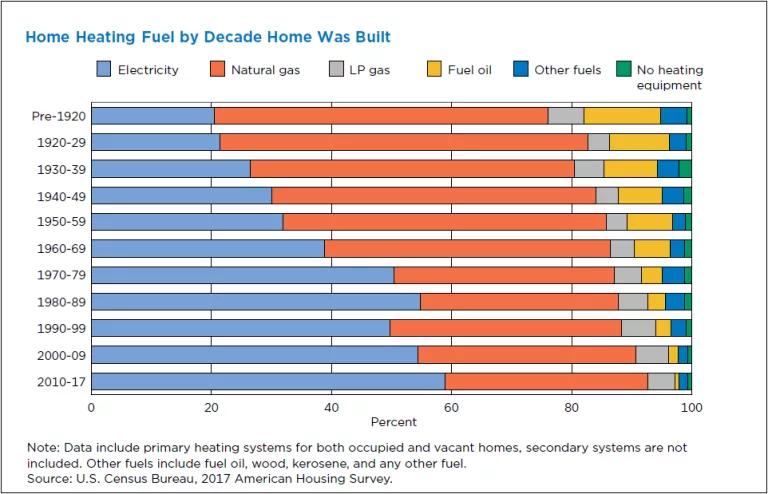
It is time to kick California’s addiction to gas in buildings. The 2022 statewide building code update is a critical opportunity for the Energy Commission to put the state back on a leadership track for pollution-free buildings, particularly for low-income communities who are disproportionately impacted by air pollution and can least afford the escalating costs of gas. That's why the California Air Resource Board (CARB) adopted a resolution today supporting updates of the code for stronger kitchen ventilation standards and electrification of appliances.
The State of the 2022 Code Update
The commission has been holding public workshops on various aspects of the 2022 code and presented promising proposals for moving high-rise multifamily buildings and non-residential buildings such as offices, schools, and retail toward electric heat pumps for space heating.
For new single-family and low-rise residential buildings, staff proposed code compliance credits to encourage builders to choose clean heating technologies like heat pumps. This is an encouraging first step, but more is needed: incentives alone are insufficient to shift the new construction market away from gas. Without stronger measures requiring gas-fueled buildings to do their fair share in reducing air pollution and climate emissions, market inertia will prevail, and adoption of clean electric technologies will continue to be marginal during the next three years.
Single-family homes still represent most new construction in the state. Deferring action until the next code update in three years would cost Californians $1 billion in unnecessary gas infrastructure, and lock them into 3 million tons of additional carbon emissions by 2030.
Why New Construction?
New construction is the no-regrets first step toward “decarbonizing” buildings. The technology to heat new buildings with emissions-free clean electricity costs no more to install or operate and is already broadly adopted elsewhere.
In fact, heat pumps for space heating and cooling in a new home cost less to purchase, install, and run than gas furnaces and separate air conditioning systems a recent NRDC analysis shows. This is because a heat pump is basically a reversible air conditioner: upgrading from an A/C to a heat pump adds little cost and avoids the need for a separate gas furnace.
And these savings from going all-electric don’t include avoiding the expense of the connection to the gas mains in the street, the gas meter, and gas plumbing.
Construction costs decrease even further when including proposed code compliance incentives and upcoming financial incentives from new programs aimed at boosting clean energy technologies.
All-electric homes are not just cheaper, faster, and cleaner to build, they also reduce heating and hot water bills by up to 50 percent when powered by low-cost onsite solar electricity that is now standard in most new construction in California.
Time for Decisive Action
The movement toward clean, gas-free buildings is gaining significant momentum locally. Nearly 40 California cities have adopted standards that either require or strongly encourage all-electric construction.
While city action is admirable and has redefined climate leadership in buildings, not every city has the resources to adopt a local building code. It is the state’s responsibility to build on local leadership and expand it statewide.
The Commission is due to present its proposal for electrification in new construction at a workshop early December and we urge commissioners to seize this opportunity to move new homes and buildings toward cleaner, cheaper, healthier buildings powered by renewable electricity.

